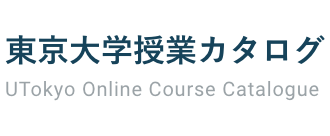過去(2023年度)の授業の情報です
学内のオンライン授業の情報漏洩防止のため,URLやアカウント、教室の記載は削除しております。
最終更新日:2025年4月21日
授業計画や教室は変更となる可能性があるため、必ずUTASで最新の情報を確認して下さい。
UTASにアクセスできない方は、担当教員または部局教務へお問い合わせ下さい。
最終更新日:2025年4月21日
授業計画や教室は変更となる可能性があるため、必ずUTASで最新の情報を確認して下さい。
UTASにアクセスできない方は、担当教員または部局教務へお問い合わせ下さい。
Advanced Topics in Matching Theory and Market Design
Matching Theory and Market Design
How to match people to other people or goods is an important problem in society. Just think of some examples such as (1) student placement in schools, (2) labor markets where workers and firms are matched to one another, and (3) organ transplantation, in which patients are matched to potential donors. The economics of “matching and market design” has analyzed these problems and improved real-life institutions in recent years. For example, economists have helped (1) NYC, Boston and other U.S. cities design their school choice programs, (2) medical communities reorganize their hiring procedure, and (3) organize systematic kidney exchange mechanisms to give kidneys to as many patients as possible. This is a subject that attracted much attention in 2012, as the Nobel Prize in economics was awarded to Alvin Roth at Stanford and Lloyd Shapley at UCLA who are pioneers in matching and market design, and the John Bates Clark medal (a.k.a. "baby Nobel") awarded to Parag Pathak in 2018.
This is a topics course. We discuss mechanism/market design, with the main (though not necessarily exclusive) focus on theory and application of matching theory. This class builds on basic knowledge in matching theory, but I will try to give quick review in the first few lectures. If you have never learned matching theory before, I recommend that you take a look at lecture slides in https://sites.google.com/***** and/or a book manuscript (in Japanese) at https://www.dropbox.com/*****
This is a topics course. We discuss mechanism/market design, with the main (though not necessarily exclusive) focus on theory and application of matching theory. This class builds on basic knowledge in matching theory, but I will try to give quick review in the first few lectures. If you have never learned matching theory before, I recommend that you take a look at lecture slides in https://sites.google.com/***** and/or a book manuscript (in Japanese) at https://www.dropbox.com/*****
時間割/共通科目コード
コース名
教員
学期
時限
0704176
FEC-EC5801L2
Advanced Topics in Matching Theory and Market Design
小島 武仁
水曜2限
講義使用言語
英語
単位
2
実務経験のある教員による授業科目
NO
他学部履修
可
開講所属
経済学部
授業計画
Announced later.
授業の方法
The first few classes will be based on lectures. The tentative plan is to move to student presentations and discussions, although the exact plan may change depending on enrollment.
成績評価方法
Tentative plan: Class presentation(s), class participation, and a term paper, but subject to change depending on enrollment.
教科書
None
参考書
For reviewing basic material in matching theory, take a look at lecture slides at
https://sites.google.com/*****
Additional information can be obtained from
Haeringer, G. (2018) Market Design: Auctions and Matching, MIT Press
or
A book manuscript (in Japanese) at https://www.dropbox.com/*****
Other materials are to be announced.
履修上の注意
I assume basic knowledge about matching theory, although I will give a few lectures to review basic material. If you are unfamiliar with the topic but would like to take the course, you are very welcome to do so, but please make sure to familiarize yourself with basic material I mentioned.





 学部後期課程
学部後期課程

 マイリストに追加
マイリストに追加
 マイリストから削除
マイリストから削除


